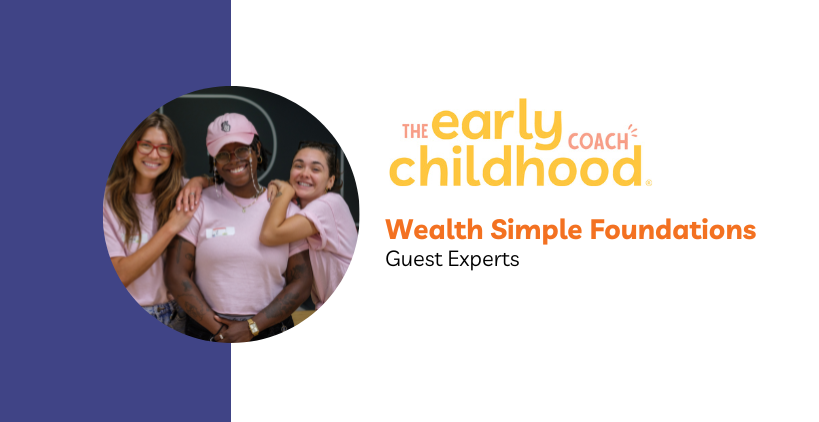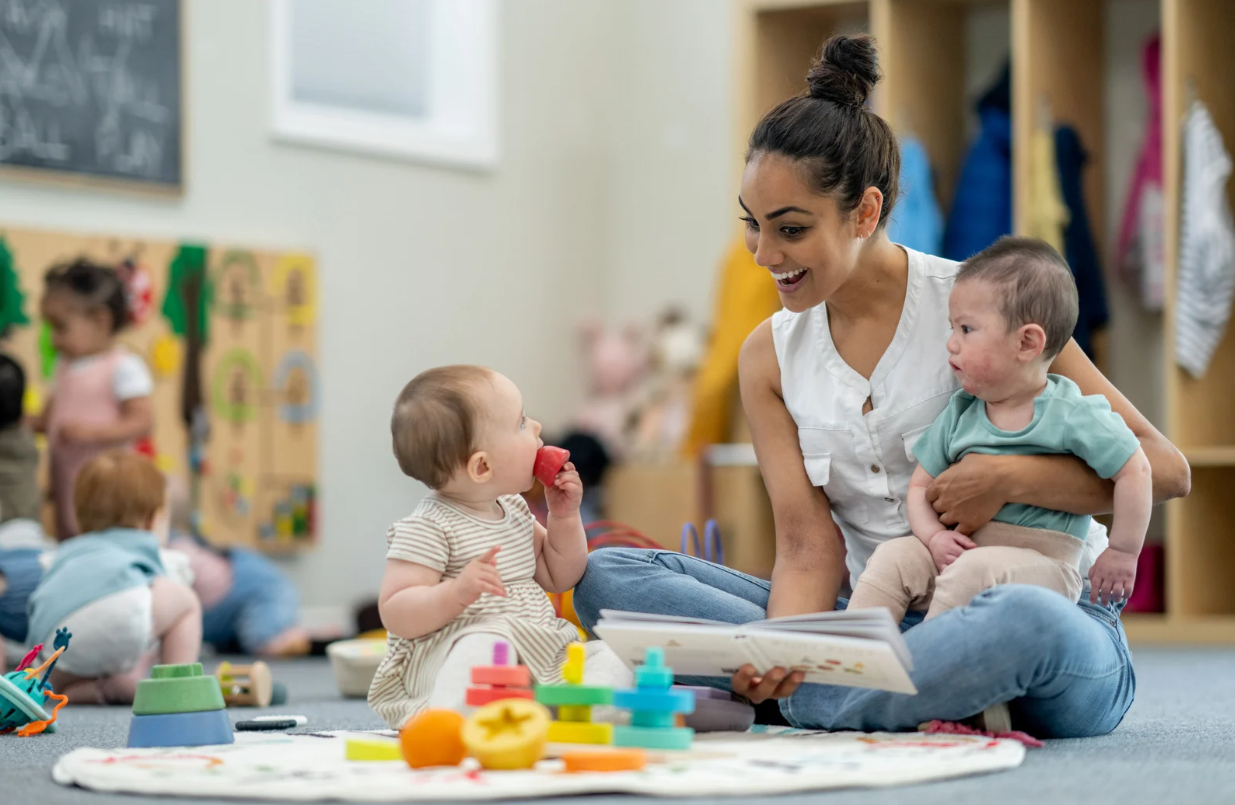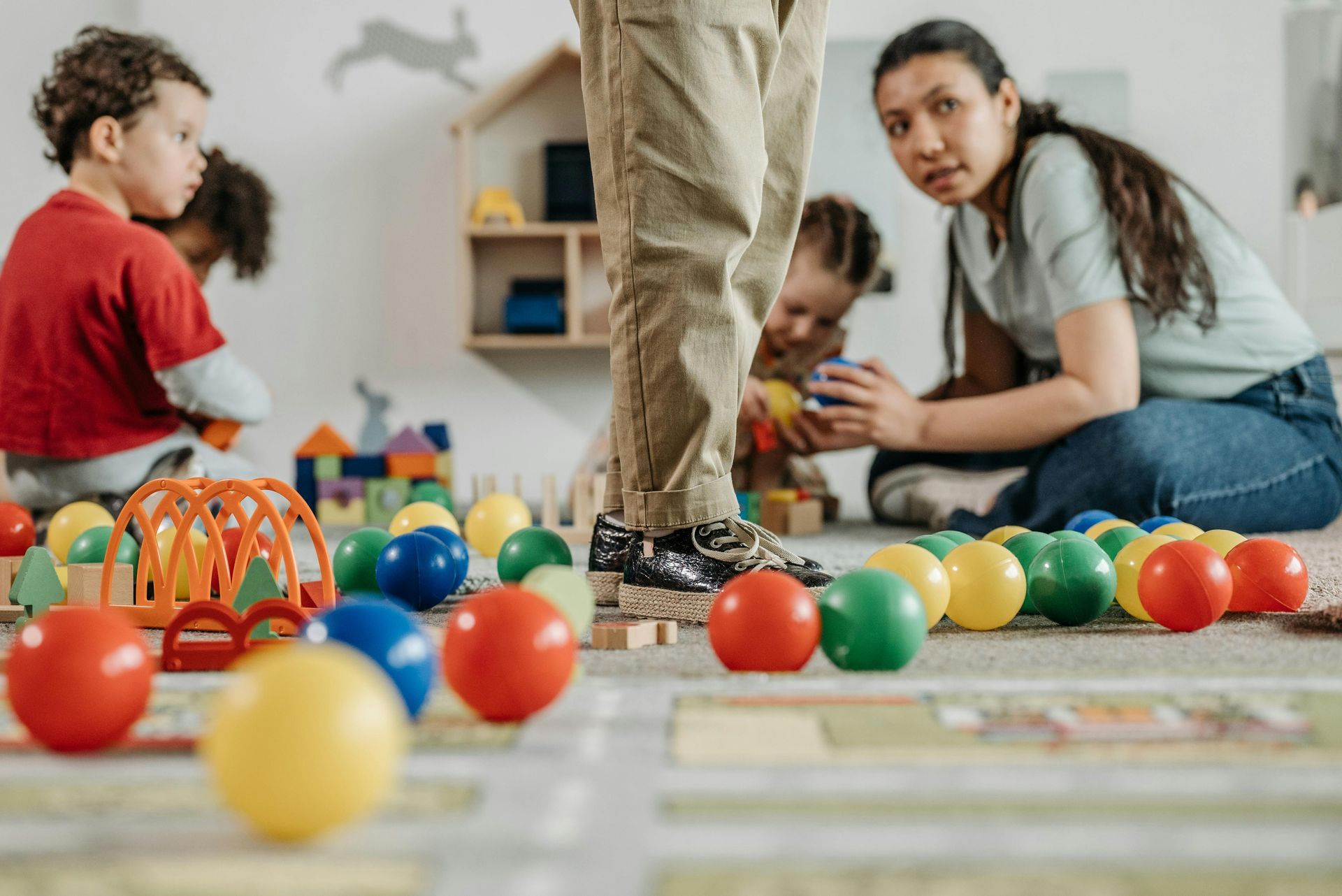How ECEs Can Enhance Education Access through Wealthsimple Foundation
Anisha Grossett • December 18, 2023
Wealthsimple Foundation
is on a meaningful mission to make post-secondary education more affordable and inclusive for all. We know you've got questions, so read on to discover everything educators need to know about how WSF enhances education access in Canada.
Tell us about Wealthsimple Foundation and the work you do:
At Wealthsimple Foundation, our mission is to break down the barriers to education for everyone living in Canada. We do this in three ways: education savings promotion, accessible personal finance education, and bursary programs for modest- income students. We believe that everyone deserves access to education, regardless of background or income level.
What types of programs do you offer, and who do they help?
We design our programs with simplicity and impact in mind. They include:
1. Education Savings Promotion: This includes helping families access government grants, specifically the Canada Learning Bond,
a $500 - $2000 per child benefit, and open Registered Education Savings Plans (RESPs).
2. Financial Literacy: Delivered in partnership with community organizations across Canada.
3. Bursaries: Low-barrier bursaries for modest-income students.
4. Career Support: Innovative future-focused programming for young people.
What work has WSF completed or on a mission to complete for the education community?
Wealthsimple Foundation is committed to making post-secondary education accessible for all. To date, we have helped over 12,000 people across Canada access $7M in Canada Learning Bond payments - a $500 - $2000 contribution free benefit that ~⅔ of young people are eligible for - helped 4,863 people access personal finance education through community partners, and provided $136,000 in bursary funding to students to help them attend post-secondary.
What is Financial Literacy Month?
Financial Literacy Month is a dedicated period to shine a spotlight on the importance of financial literacy. It’s a time for organizations, educators, and financial experts to come together, share resources, and educate the public on how to achieve financial well-being.
Why is financial literacy critical? How does it connect to early childhood education?
Financial literacy is foundational—it equips individuals with the skills to make smart financial decisions, paving the way for a stable and secure future.
For early childhood educators, it’s about planting the seeds of financial awareness that can lead to well-informed financial decisions in adulthood.
We also believe that when educators are financially empowered, this extends to the children, families, and communities they serve.
Early childhood educators play a key role in our communities by shaping young minds and connecting families with the tools and resources they need. Imagine ECEs equipped with robust financial education—this knowledge doesn’t just stay within the walls of the classroom. It has a positive ripple effect, extending into their communities. Through their interactions, ECEs can weave financial literacy into everyday learning. They are in a powerful position to impact generations, turning lessons into legacies.
What tools and resources do you have for early childhood educators?***
1.
RESP calculator:
Our
online tool
helps families figure out how much they could save and earn for their education goals.
2.
Website resources:
We provide a wealth of information on our
website, including guides on opening a RESP, understanding government grants, and a number of financial know-hows.
3.
1:1 RESP onboarding support:
Our team is available to answer any questions you may have about
opening an RESP
for your own family or your students' families.
4.
Host events in their community:
We can work with early childhood educators to host financial literacy events in their communities, helping parents and caregivers understand the importance of saving for post-secondary education.
How can early educators get involved to support families and children?
Early educators hold a special key to unlocking a brighter future for families and children, and there are several impactful ways they can get involved:
1.
Get to know the education savings incentives available,
like the Canada Learning Bond (CLB), a $500-$2000 benefit for modest-income families to kickstart their children’s post-secondary education savings without personal contributions.
2.
Share the knowledge:
With as little as $500 saved, students are 3X more likely to pursue higher education and 4X more likely to graduate.
3. We invite you to connect with us through the ECE Hub on Facebook.
You can join the
ECE Hub on Facebook and reach out to Gina or Emily for personalized guidance on making informed decisions to support your children and communities.
4.
Keep an eye out for our upcoming workshops and training to further your impact.
Stay engaged with our community through our social channels and newsletter for updates on upcoming
events, financial education content, and more.
Interested in finding out how you can contribute to improving education for everyone? Join the
ECE Hub
on Facebook and connect with Gina or Emily from the Wealthsimple Foundation!


December has a way of sneaking up on us, doesn’t it? One moment, we’re kicking off a new year with fresh goals, and the next, we’re knee-deep in holiday plans, wrapping up projects, and trying to catch our breath. For early childhood educators and leaders, this time of year can feel especially heavy — the final push before the holidays often comes with its own mix of joy, exhaustion, and reflection. But here’s the truth: the end of the year is not just a closing chapter. It’s an invitation — to pause, to rest, and to prepare ourselves for what’s to come. This December, let’s shift the focus from “finishing strong” to “resting strong.” Because when you rest well, you’re not stepping back — you’re stepping into the new year with clarity, energy, and purpose.

In early childhood education, we often talk about nurturing growth. But how often do we create the same nurturing environment for our own professional development? Whether you're an educator wondering what’s next or a childcare owner thinking about how to keep your best staff, one truth remains: career growth in ECE doesn’t follow a single, straight path. It’s dynamic. It’s personal. And it should be intentional. It’s time to explore the many ways early childhood professionals can move forward — not just up — in their careers.

Becoming a leader in Early Childhood Education (ECE) is an exciting yet challenging transition. Whether you're stepping into a leadership role for the first time or moving up within a company you've been a part of, this journey requires new skills, a fresh mindset, and a commitment to growth. Leadership in ECE goes beyond management — it’s about fostering relationships, guiding educators, and creating a thriving learning environment for children and staff alike. Essential Tips for New ECE Leaders & Supervisors 1. Embrace Active Listening Leadership isn’t just about giving instructions — it’s about truly hearing and understanding your team. Actively listen to educators, parents, and children to build trust and show that their voices matter. 2. Build Strong Relationships Strong leadership is rooted in strong relationships. Take time to connect with your team on a personal level, understand their strengths, and foster a culture of collaboration and respect. 3. Lead by Example Your team will look to you as a role model. Show professionalism, positivity, and a willingness to learn, and your team will follow suit. 4. Communicate Clearly and Consistently Clarity in communication helps prevent misunderstandings and ensures that expectations are met. Be open, transparent, and available for discussions. 5. Stay Open to Feedback Leadership is a continuous learning process. Invite and accept feedback with an open mind, and use it to refine your approach. 6. Prioritize Professional Development As an ECE leader, ongoing learning is key. Engage in training sessions, read leadership books, and seek mentorship to continue growing in your role.

Conflict is an inevitable part of any human relationship — and in the dynamic, emotionally rich environment of early childhood education, it can arise in many forms. Whether you’re leading a team or working directly with children and families, knowing how to approach conflict with confidence, empathy, and clarity is a key part of thriving in this field. At The Early Childhood Coach, we believe that conflict doesn’t have to be destructive — it can actually be a catalyst for growth, stronger relationships, and positive change. Let’s explore the different types of conflict you may encounter, and how you can manage them with intention and leadership.

In today’s fast-evolving world of early childhood education, professional development can no longer be a one-time event or an annual checkbox. The most innovative organizations are embracing a new model of learning — one that’s flexible, sustainable, and embedded into the culture of their team. Enter: the Learning Management System (LMS) and the rise of in-house training ecosystems. 🌍 The Shift to Ongoing, Accessible Learning A Learning Management System (LMS) is a digital platform used to deliver, track, and manage training and education. Think of it as a virtual hub where your team can access workshops, modules, videos, and interactive learning activities — all at their own pace. More than a trend, LMS platforms are becoming an essential tool for childcare organizations that want to stay aligned with licensing requirements, increase staff engagement, and reduce onboarding time for new educators. But even more importantly, they empower staff to grow in real time — with content tailored to their daily realities.

Welcoming new Early Childhood Educators (ECEs) and staff into your center is more than just handing them a policy manual and showing them the breakroom. A strong, innovative onboarding process sets the foundation for their success, increases retention, and fosters a positive workplace culture. Yet, research shows that onboarding remains a challenge in many early childhood settings. The Challenge of Onboarding in Early Childhood Education A 2022 report from the Society for Human Resource Management (SHRM) found that nearly 30% of new employees leave a job within the first 90 days, with lack of proper onboarding and insufficient mentorship being key reasons. In early childhood education, this is especially concerning, as new hires must quickly adapt to a fast-paced environment while learning center policies, child development best practices, and team collaboration strategies. Traditional onboarding methods often focus on paperwork and compliance, missing the opportunity to engage new educators in meaningful ways. To combat high turnover and ensure new hires feel supported, early childhood leaders must embrace innovative and unconventional onboarding strategies that foster connection, growth, and a sense of belonging from the start.

As educators working with infants, one of the most important tools in our communication tool box is our voices! Lalalalaaaaaa! Our voices are dynamic and powerful tools used for many things including singing, laughing, advocating, and so much more. One of these these amazing and scientifically proven ways to use our voices is child-directed speech, also known as parentese or as I like to call it - Educatorese 😉! Sometimes mistaken for “baby talk”, child-directed speech plays a critical role in how infants and toddlers learn (and enjoy) language. In this blog post, we will dive into the science of child directed speech, some practical ways to incorporate it effectively into childcare connections, and reflect on how you use your voice with babies!

“The environment is the third teacher.” This phrase is one I’ve heard often throughout my career in early childhood education. Rooted in the Reggio Emilia approach, it emphasizes the environment as an intentional and purposeful extension of learning. I’ve wholeheartedly embraced this philosophy in my own classrooms, recognizing that a well-designed environment is more than just a space—it’s an active teaching experience and a direct reflection of a program’s values. Have you ever taken a step back to observe how children interact with their surroundings? Watching how they explore, navigate, and engage with their environment can be incredibly insightful. As educators, it’s our role to create a space that fosters curiosity, collaboration, and meaningful learning opportunities. A thoughtfully designed classroom should: ✔ Have a natural flow that supports exploration and learning. ✔ Reflect children’s interests and showcase evidence of their growth. ✔ Provide opportunities for investigation, creativity, and problem-solving. ✔ Serve as a tool for classroom management by promoting engagement and minimizing disruptions. For example, we know children love to run. Structuring the classroom layout with intentional furniture placement can help prevent open running paths while still allowing movement and engagement. A well-planned space should feel inviting, safe, and supportive while fostering a sense of belonging for every child.

As educators, we know the environment we create plays a vital role in shaping the learning experiences of children. A well-organized, thoughtfully designed classroom sets the stage for creativity, exploration, and growth—all while promoting positive behavior and independence. Whether you're setting up your classroom for the first time or giving it a mid-year refresh, these actionable tips will help you create a welcoming, functional, and inspiring space for success.

It was a typical morning in the classroom. The hum of busy little hands and curious minds filled the air. Maya, an Early Childhood Educator (ECE), glanced around, her heart swelling with pride. It was moments like these—when a child’s eyes lit up with understanding or when a shy toddler found the courage to join a group—that reminded her why she chose this path. Yet, deep down, Maya often wondered: Am I really a leader? Perhaps you, too, have asked yourself the same question. The word "leader" may bring to mind images of CEOs in boardrooms or heads of organizations rallying teams. But let’s shift that perspective. Leadership isn’t about titles; it’s about influence, impact, and the way you inspire those around you—adults and children alike. As an ECE, you are already a leader. The question is, how can you activate your leadership fully? Let’s take a journey together, exploring how to unlock the leader within. Because here’s the truth: Every ECE is a leader in early childhood education.
